Results 4,941 to 4,950 of 12094
Thread: Anandtech News
-
04-27-15, 06:30 PM #4941
Anandtech: Apple Releases FY 2015 Q2 Earnings Results: Strong Growth In China Fuel La
Today Apple announced their earnings for their second quarter for fiscal year 2015. Once again, iPhone dominated their revenue stream, with 40% more units sold and 55% more revenue than the same period last year. Total revenue for the quarter came in at $58 billion, which is up 27% year-over-year. Gross margin for the quarter was up too, coming in at 40.8% for this quarter. Net income was $13.6 billion, which works out to $2.33 per share.
Almost 70% of Apple’s revenue came from international sales, but China was the big market for Apple this quarter. Sales in Greater China were up 71% year-over-year, to $16.8 billion for this quarter. This is even a 4% rise over Q1, which was the launch quarter for the iPhone 6 series. China is now the second biggest market for Apple, closing in on the Americas where sales this quarter were $21.3 billion.Apple Q2 2015 Financial Results (GAAP) Q2'2015 Q1'2015 Q2'2014 Revenue (in Billions USD) $58.010 $74.599 $45.646 Operating Income (in Billions USD) $18.278 $24.246 $13.593 Gross Margin (in Billions USD) $23.656 $29.741 $17.947 Net Income (in Billions USD) $13.569 $18.024 $10.223 Margins 40.8% 39.9% 39.3% Earnings per Share (in USD) $2.33 $3.08 $1.66
iPhone sales kept up their torrid pace. In Q1, Apple sold almost 75 million iPhones, and while there is traditionally a drop in the quarter succeeding the launch of the phone, they still managed to sell over 61 million iPhones for Q1. Year-over-year, this is a 40% increase in devices sold and even better for Apple’s bottom line, revenue was up 55%. With Apple, there really is iPhone, and everything else. iPhone accounts for 69.4% of all of Apple’s revenue. They are top heavy in this one product, but it seems to be a product that just keeps giving returns.
Mac sales were also up, with a 10% increase in units sold as compared to Q2 2014. Revenue for Mac also increased, but only 2%. Unit sales were 4.5 million devices, which accounted for $5.6 billion in revenue. This works out to an Average Selling Price of $1230.55 per Mac computer. Macs have once again surpassed iPad sales to become the number two device at Apple. For Q1, and the launch of the new iPad Air 2, iPad sales briefly retook the lead, but Mac sales have surpassed iPad again.
iPad sales have continued to struggle. What was once thought to be the next iPhone has certainly struggled to maintain the trajectory it first had. Sales for Q2 were 12.6 million units, which is down from the 21.4 million last quarter (when the new products were launched) and also down significantly year-over-year from the 16.35 million in Q2 2014. That is a 23% decline in sales, and it resulted in a 29% reduction in revenue, with iPad now coming in at $5.4 billion.
Services however did not suffer such a fate, and at $4.996 billion in revenue, iTunes, the App Store, and other Apple services are now almost a $5 billion per quarter business. Revenue was up 4% since Q1 2015, and up 9% from a year ago.Apple Q4 2014 Device Sales (thousands) Q2'2015 Q1'2015 Q2'2014 Seq Change Year/Year Change iPhone 61,170 74,468 43,719 -18% +40% iPad 12,623 21,419 16,350 -41% -23% Mac 4,563 5,519 4,136 -17% +10%
The final segment Apple reports on is “Other Products” which include iPod, Apple TV, Beats, and accessories. Revenue for this segment was $1.69 billion, down from $1.88 billion a year ago, and $2.69 billion in Q1. This is a year-over-year decrease of 10%. Much of that would be iPod sales which only two quarters ago were still listed in their own category, but have been falling for several years now as they have been superseded by smartphones.
As part of their announcement, Apple is also expanding their capital return program. What was first going to be a $90 billion share repurchase program is now up to $140 billion. There is also going to be an 11% increase to the quarterly dividend, which will now be $0.52 per share, payable on May 14th to all shareholders of record as of May 11th. Since the creation of their capital return program, Apple has paid out over $112 billion to shareholders, with $80 billion of that being share repurchases.Apple Q2 2015 Revenue by Product (billions) Q2'2015 Q1'2015 Q2'2014 Revenue for current quarter iPhone $40.282 $51.182 $26.064 69.4% iPad $5.428 $8.985 $7.610 9.4% Mac $5.615 $6.944 $5.519 9.7% iTunes/Software/Services $4.996 $4.799 $4.573 8.6% Other Products $1.689 $2.689 $1.880 2.9%
For Q3, the forecast is revenue of $46 to 48 billion, with margins between 38.5% and 39.5%.
To a certain extent, we have become numb to the record breaking numbers every quarter, but really it is impressive that they have been able to sustain this for so long. For Q2, they once again set records for iPhone and Mac sales, and the App Store had an all-time record quarter. They have some new products in the market now with the MacBook and the Apple Watch, so it will be interesting to see the Q3 numbers.
Source: Apple Investor Relations
More...
-
04-28-15, 07:45 AM #4942
Anandtech: The Next Generation Open Compute Hardware: Tried and Tested
Open source software has been the basis of most of the innovation in IT the past years: virtualization, the new mobile OS (Android and IOS), the lionshare of new apps, Big Data analytical software, new storage software, Internet of Things... have all been inspired or even build upon open source software. Could open hardware be a similar powerful source for a steady stream of improvements in hardware and datacenter design?
More...
-
-
04-28-15, 11:00 AM #4944
Anandtech: LG Announces the G4: 5.5-inch QHD with Snapdragon 808
In a joint event between London and New York, LG has lifted the veil on the next iteration of its high-end smartphone, the G4. The G3's designs largely borrows from the G3 and iterates on it with a new slightly curved screen and optional leather back covers. The camera seems to be LG's core focus for this device, and we'll get back on those details in just a bit.
The G4 will be the first device to officially use the Snapdragon 808, Qualcomm’s MSM8992 big.LITTLE SoC arrangement that uses two ARM A57 cores in one cluster clocked in at 1.82GHz and four ARM A53s at 1.44GHz in the other. The GPU also uses a lower end Adreno 418 clocked in at 600MHz. Qualcomm avoided LPDDR4 in the S808, and thus remaines a LPDDR3 piece likely running at up to 933MHz.
The specification lists shows an iterative improvement over the G3, launched last year:
The screen size and resolution stay constant at 5.5" and QHD, but the device has an angular element to it, similar to the LG G Flex 2 but not as pronounced: The screen is touted to be a new generation IPS Quantum display. It looks like LG is claiming 20% gamut increase. The display has 50% increased contrast over the G3, achieving a total of 1500:1 contrast ratio. The G4 reintroduces Panel Self Refresh which was unfortunately missing from the G3, and this should vastly improve battery life over its predecessor.LG G3 LG G4 SoC MSM8974AC Snapdragon 801
4x Krait 400 @ 2.5 GHzMSM8992 Snapdragon 808
2xA57 @ 1.82GHz
+
4xA53 @ 1.44GHzGPU Adreno 330 @ 578MHz Adreno 418 @ 600MHz RAM 3 GB LPDDR3 LPDDR3 933MHz NAND 32GB NAND (eMMC 5.0)
+ microSDNAND (eMMC 5.0)
+ microSDDisplay 5.5-inch 2560x1440 IPS LCD 5.5-inch 2560x1440 IPS LCD Network 2G / 3G / 4G
Qualcomm MDM9x25
UE Category 4 LTE2G / 3G / 4G
Qualcomm X10 (Integrated)
UE Category 9 LTEDimensions 146.3 x 74.6 x 8.9 mm
149 grams149.1 x 75.3 x 8.9 mm Camera 13MP rear camera, 1.12 µm pixels, 1/3.06" CMOS size, F/2.4. OIS
2.1MP F/2.0 FFC16MP Sony IMX234 rear camera,
1.12µm pixels, F/1.8
8MP Toshiba T4KA3 FFCBattery 3000 mAh (11.4 Wh) 3000 mAh (11.4 Wh) OS Android 4.4.2 with LG UI Android 5.1 with LGUX 4.0 Connectivity 802.11a/b/g/n/ac + BT 4.0, USB2.0, GPS/GNSS, MHL, DLNA, NFC 802.11a/b/g/n/ac + BT 4.0 SIM Size MicroSIM NanoSIM
The screen has a 3000mm radius curve throughout the phone's design that LG markets as "Slim Arc" design.
The phone comes in several different plastic and leather cover options. These are high-quality hand-produced genuine leather products. The plastic version sports a diamond pattern mimicking a metallic look. This also means the G4 is slightly bigger and heavier than the G3. The removable battery of the G4 remains similar to the G3 at 3000 mAh, and the SIM moves to the nano-size. The microSD slot remains an option for the G4.
The G4 gets a camera update, moving from a 13MP to a 16MP design that migrates from an F/2.4 to F/1.8, allowing for potentially better performance. We find a Sony IMX234 sensor, a unit we haven't yet seen used in any other devices. LG were keen to point the F/1.8 over Samsung’s F/1.9 on the latest Galaxy S6. The new OIS system dubbed "OIS 2.0" now offers a 3-axis gyroscope instead of the traditional 2-axis implementations in all current OIS devices. Another first is the implementation of a colour spectrum sensor next to the flash unit, and is able to read RGB and infrared light. LG is able to vastly improve white-balance and also increase clarity for more natural pictures.
The phone now also offers full manual control, with customizable ISO, exposure, shutter speed and white balance among other things. RAW format capture is also supported. Double clicking on the rear buttons already takes a picture within a second, LG is here taking another stab at Samsung's S6 as it only is able to open the camera app in the same time.
The front camera has been boosted to a 8MP Toshiba T4KA3 sensor and sports an improved gesture shot triggering function.
The volume rocker on the rear changes slightly, moving to a flatter central piece. The flash element of the camera in this area is a dual LED design, and we also find the microphone grille at the bottom. One of the elements LG seems to be pushing with the G4 is the design of the back cover, allowing for a replaceable leather rear while retaining the front facia that exhibits a faux carbon-fibre effect of sorts.
The device should be available this week in major markets. We’re currently waiting in line to get some hands-on time with the device, and hopefully on the list to get a sample to follow up from the LG G3 review.
More...
-
04-29-15, 07:31 AM #4945
Anandtech: Logic Supply ML100G-30 Fanless Broadwell vPro Industrial NUC Review
Passively cooled computing systems carry many advantages. Most of these turn out to be very important for industrial and embedded applications. The low power nature of the NUCs make them the ideal candidate for passive industrial computing platforms. We have already reviewed a number of industrial PCs before. Today, we have the first off-the-shelf passively cooled Broadwell vPro PC in for review from Logic Supply. Read on for our
thoughts on this unique industrial PC.
More...
-
-
04-29-15, 02:00 PM #4947
Anandtech: Microsoft's Project Spartan Browser Officially Named As Microsoft Edge
Today during the opening keynote of the Microsoft Build developer conference the official name of Microsoft's new web browser was revealed. The new browser has previously been referred to as Project Spartan, and the official name was withheld until today. Today it was revealed to the world that the new browser is called Microsoft Edge, and it will be the primary browser that is built into Windows 10 when it is released to the public.
There aren't a whole lot of details about Edge at the moment, but Microsoft did play a launch video for the new browser during the Build keynote, and they've put it on Youtube for everyone to see. What is known is that the browser has Microsoft's Cortana assistant built in, has a very new and minimalist design, and runs on a new Microsoft built rendering engine called EdgeHTML. The video released by Microsoft also shows some new features like the ability to draw on web pages.
As more information about Microsoft Edge is revealed during the course of Build we'll be sure to bring it to you.
More...
-
04-29-15, 03:00 PM #4948
Anandtech: Microsoft Details Improvements To The Windows Store For Users, Businesses,
The Windows store was a large area of focus during today's Microsoft BUILD keynote. As Microsoft expands Windows across multiple platforms and devices, part of their strategy has been enabling developers to make universal applications that will run on all Windows 10 devices. It follows that a store to distribute these applications also exists across all those devices, and so the Windows Store will be a very important area of focus for Microsoft.
For end users, one of the new capabilities that Microsoft is touting is the wide range of options for billing. According to Microsoft, they have the larger carrier billing network of any ecosystem, with 90 carriers supported worldwide. This is a very key feature for enabling purchases in areas of the world where it is uncommon for a user to have a credit card or access to online payment services like Google Wallet and PayPal. Microsoft is also making note of how applications downloaded from the Windows Store are easy to install and uninstall, and are free from the issues like files left after uninstallation that have plagued some Windows programs for years.
For businesses, Microsoft is allowing company system admins to highlight and distribute apps in the Windows Store to employees using Windows Phone devices. Support for payment methods that are unique to businesses such as purchase orders is also being enabled.
For developers, Microsoft is highlighting a number of new features. Carrier billing is again mentioned, as it allows for developers to target a greater market of people with paid applications. Microsoft is also updating their advertising SDK to support video advertisements and tracking app installs. Support for subscriptions that can be bought via in-app purchases is also being added for applications on the Windows Store.
One final point about the Windows Store that will benefit developers is the new ability to bring .NET and Win32 applications into the store. These applications will be run sandboxed to allow for the same ease of installation and use as current applications in the store, and Microsoft has partnered with Adobe to bring Photoshop Elements to the store as an example of how other developers can do this with their existing applications.
More...
-
04-29-15, 03:00 PM #4949
Anandtech: Microsoft Shows Off Continuum For Windows 10 Phones
Today Microsoft revealed a number of new features relating to their various platforms at their BUILD developer conference. One of the most interesting features shown was the Continuum feature of Windows 10 phones. Microsoft has previously shown off the ability for tablets to connect to larger screens and input peripherals to act as a computer, and they have now shown those same abilities working on a smartphone. This is possible because applications developed for Windows 10 will be universal applications that can scale from your phone, to your computer, to your television.
During the keynote a Windows 10 smartphone was shown connected to a large display via HDMI, as well as to a Bluetooth keyboard and mouse. This allowed the phone to essentially act as though it were a Windows 10 computer, with applications like PowerPoint and Excel scaling to use the same layout that you would see when running them on a normal desktop computer. This type of dynamic behavior extends from interface changes to input paradigm changes as well. Devices may change their preferred input mode or interface to suit the peripherals that are or are not attached to a device.
Continuum looks like it will be a very interesting feature. Users will have to wait some time to get their hands on it though, as it won't be available in the preview release of Windows 10 that is scheduled to come out tomorrow. Microsoft has created a short video to explain a bit more about Continuum on Windows 10 phones and the potential use cases that they see for it, and I've embedded that video above.
More...
-
04-29-15, 03:30 PM #4950
Anandtech: Microsoft Demonstrates Android and iOS Applications Running On Windows 10
Much to the dismay of some viewers watching at home, Microsoft's BUILD developer conference today actually focused on technologies designed to benefit developers. However, some of the new developer technologies shown today may end up having profound impacts on Windows users. While Microsoft has never had any issues with making software available for Windows on the desktop, the same can't be said about Windows in the mobile space. Windows Phones and tablets have suffered from a lack of applications compared to their Android and iOS counterparts, and Microsoft hasn't been able to convince many developers to make Windows a priority for their mobile applications. Given this situation, Microsoft had to find another solution to the problem, and today at BUILD they showed what may very well be it.
The first big announcement was Project Astoria, which enables support for running Android applications programmed in Java or C++ on Windows 10 phones. During the keynote this was described as an "Android Subsystem" within Windows. It's not clear if Microsoft is accomplishing this via application emulation in the same manner as Blackberry has done so for Blackberry OS, but the end result is that developers can bring their Android applications over to Windows 10 phones with minimal effort. There will still be issues with applications that link into Google Play services for features like Maps and location, but there are now far fewer hurdles for developers than there have been in the past. Microsoft demonstrated this during the keynote by showing the Choice Hotels application for Android running on a Windows 10 smartphone. The demo did run into a few issues, but it was still impressive to see.
What's even more remarkable is Microsoft's work to allow developers to use existing code from iOS applications programmed in Objective C to make Windows 10 applications. This new initiative is called Project Islandwood, and it allows developers can take their existing applications written in Objective C, have Visual Studio convert the Xcode project into a Visual Studio solution, and compile it for Windows 10. The demo shown on stage showed an application written for the iPad being compiled to run on Windows. Not only did it work well, but the application itself was not just a basic app. Apps using UIKit and Core Animation compile fine as Windows 10 applications, and it will be very interesting to see just how far this solution can go in bringing complicated applications over to Windows.
The demonstration during the keynote was a mathematics game which utilized the UIKit framework and Core Animation, and had very complication visual effects and animation. Despite this, the demo worked even more smoothly than the Android application demonstration, and even worked with input using the mouse. Microsoft also revealed that the ability to easily bring applications programmed in Objective C to Windows 10 is not something coming in the distant future, but is a technology that exists now and has already been put to use by game company King in bringing their Candy Crush Saga game to Windows Phone.
One important thing to note is that while Project Islandwood for iOS applications allows developers to create universal Windows apps, Project Astoria is strictly for bringing Android applications to Windows 10 phones.
These two announcements from Microsoft may end up being a game changer for Windows 10 applications on the desktop and more importantly on mobile. Developers still need to be convinced to focus on Windows, but if moving applications over from iOS and Android is as easy as Microsoft has claimed then it shouldn't be very difficult to get developers on board. Only time will tell how this ends up playing out.
More...
Thread Information
Users Browsing this Thread
There are currently 20 users browsing this thread. (0 members and 20 guests)






 Quote
Quote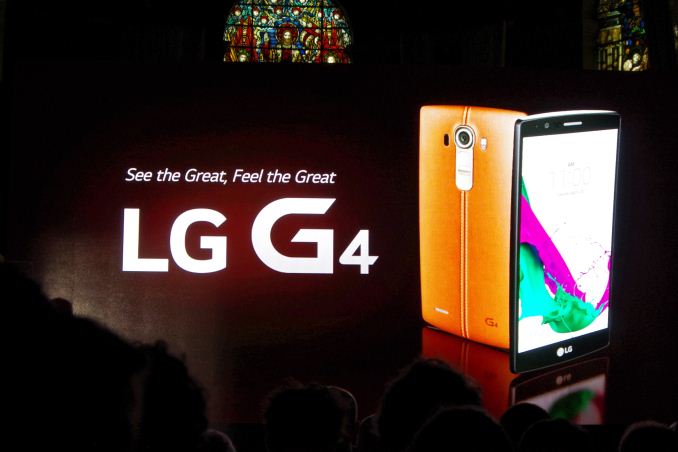
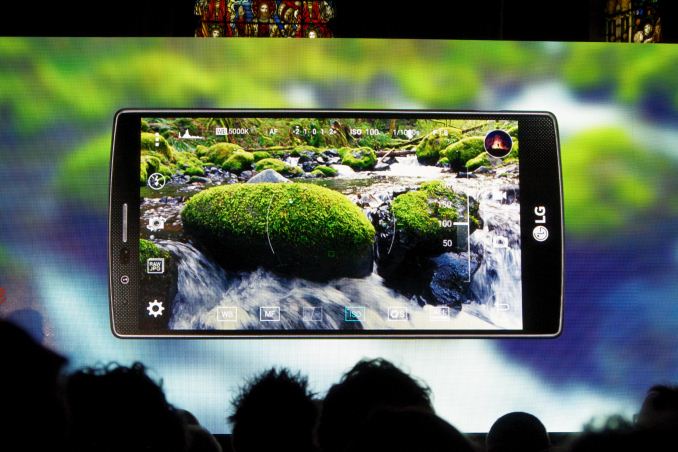
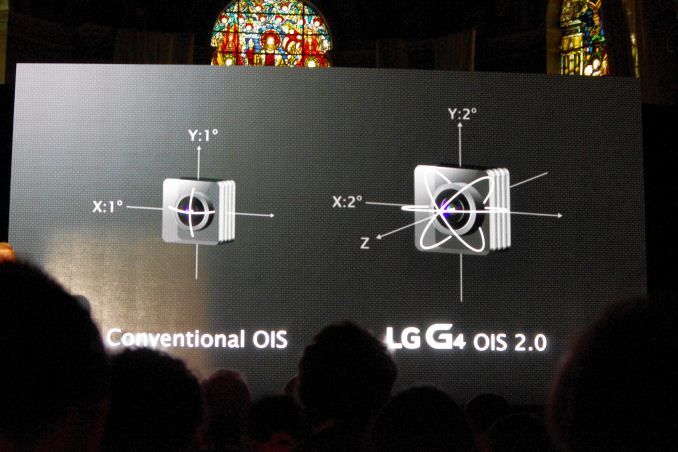

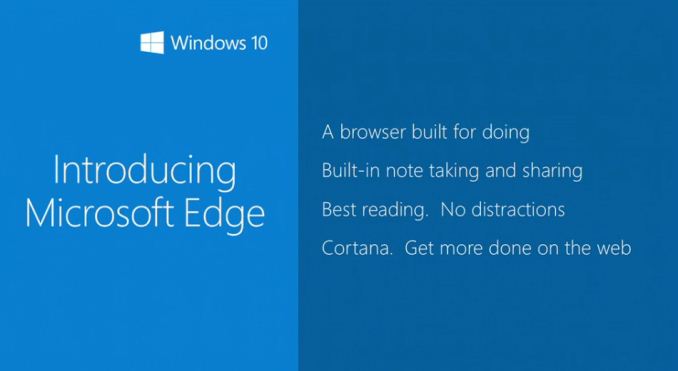


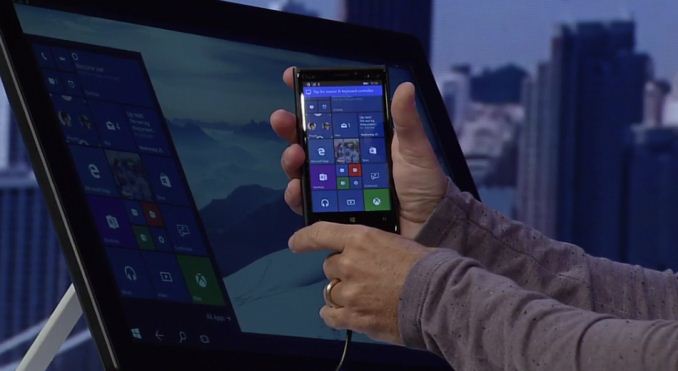


















Bookmarks